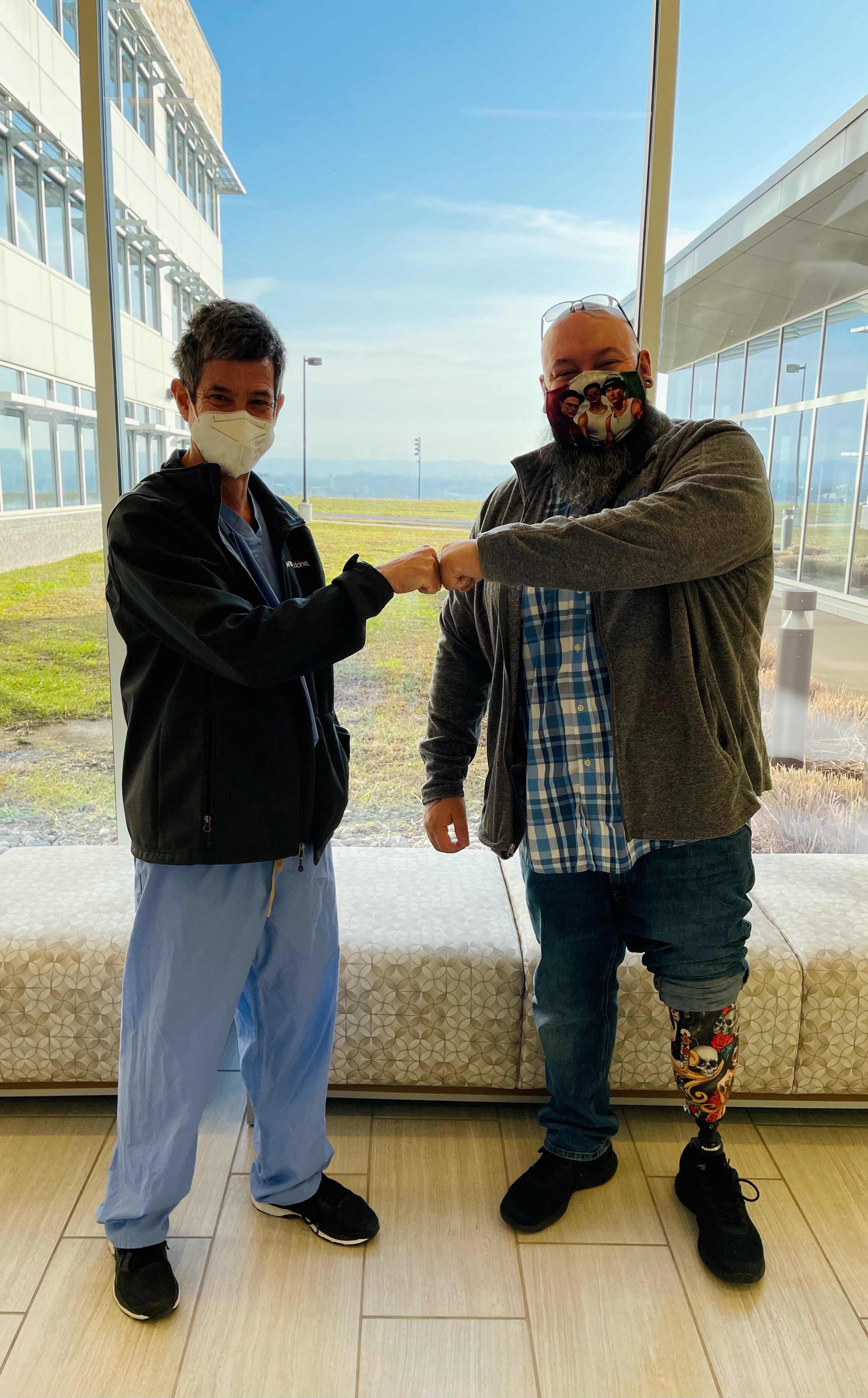MORGANTOWN, W.Va. – Losing a limb is often a worst-case scenario in someone’s mind, but for Ron Sanchez, 42, of Huntington, it was his best option. After having is his foot crushed in a logging accident as a teen, Sanchez spent more than 20 years with a foot that caused him pain and disability.

“It was a freak accident that the log came off the machine that way and crushed my foot,” Sanchez said. “The doctors did what they could to repair the injuries, but it was so badly damaged that it would never be right again.”
After years of pain and surgical procedures, Sanchez developed an infection in his foot that left a portion of the bone exposed. He and his doctors agreed that a below the knee amputation was the best course of treatment.
After his amputation, Sanchez continued to feel pain in his leg, experiencing complex regional pain syndrome and phantom limb pain. He tried treatments including mirror therapy, but nothing helped.
“Phantom limb pain is so hard to describe,” Sanchez said. “It’s like sticking your leg in a bucket of water that’s being electrified. I would be going about my day and be stopped by the pain that would last three or four hours."
Phantom limb pain can be debilitating and often takes a psychological toll. Many amputees struggle with the condition, with the unbearable pain leading some to take their own lives. This, combined with complex regional pain syndrome, a neurological condition common among amputees that causes the brain to send excessive signals to an injured area, made it difficult for Sanchez to work and enjoy life with his family.
“I had so much pain that they didn’t think I would ever be able to wear a prosthetic,” Sanchez said. “I was on the path to wind up in a wheelchair, and that wasn’t a life I wanted for myself. I have my family to take care of, so I was ready to try anything to move past this.”
Sanchez spoke to his provider at the Hanger Clinic in Huntington, looking for answers. He had heard of targeted muscle reinnervation (TMR) and researched options for Sanchez close to home, referring him to Jack Gelman, M.D., WVU Medicine plastic surgery associate program director.
“TMR is a surgical procedure that transfers nerves from another area of the amputated limb into new muscle at the amputation site,” Dr. Gelman said. “This technique can be used to treat phantom limb and other forms of nerve pain that are commonly experienced by amputees.”
TMR can be performed on both upper- and lower-limb amputees. In addition to relieving pain, it can also be used to implant nerves in the appropriate location to provide bioelectric signals to prosthetics, making their use more intuitive.
“We are just now venturing into providing bioelectric prostheses to our patients,” Gelman said. “TMR can be performed at the time of the amputation, making the transition from amputation to prosthetic use much easier while largely preventing phantom limb pain. These patients will be ready to transition to the use of bioelectric prostheses much faster than those who have not had the procedure.”
Sanchez, who received the treatment years after his original injury and amputation, said the benefits have been life changing.
“I went from living in near-constant pain to having very little, if any pain,” Sanchez said. “I’m able to wear a prosthetic now and walk around at work without any issue. This procedure has not only changed my life by taking away my pain, but it has inspired me to take better care of my health. I’ve gained a lot of weight over the years because I just wasn’t able to get around. Now, I’m getting up and moving more because I want to live a long time to take care of my kids and grandkids.”